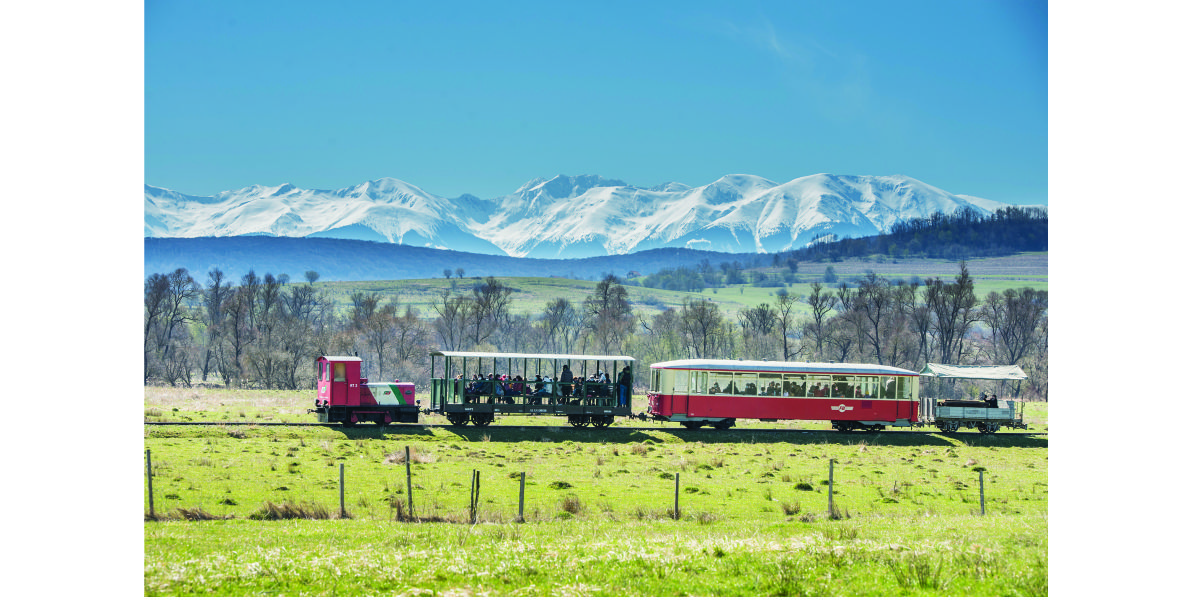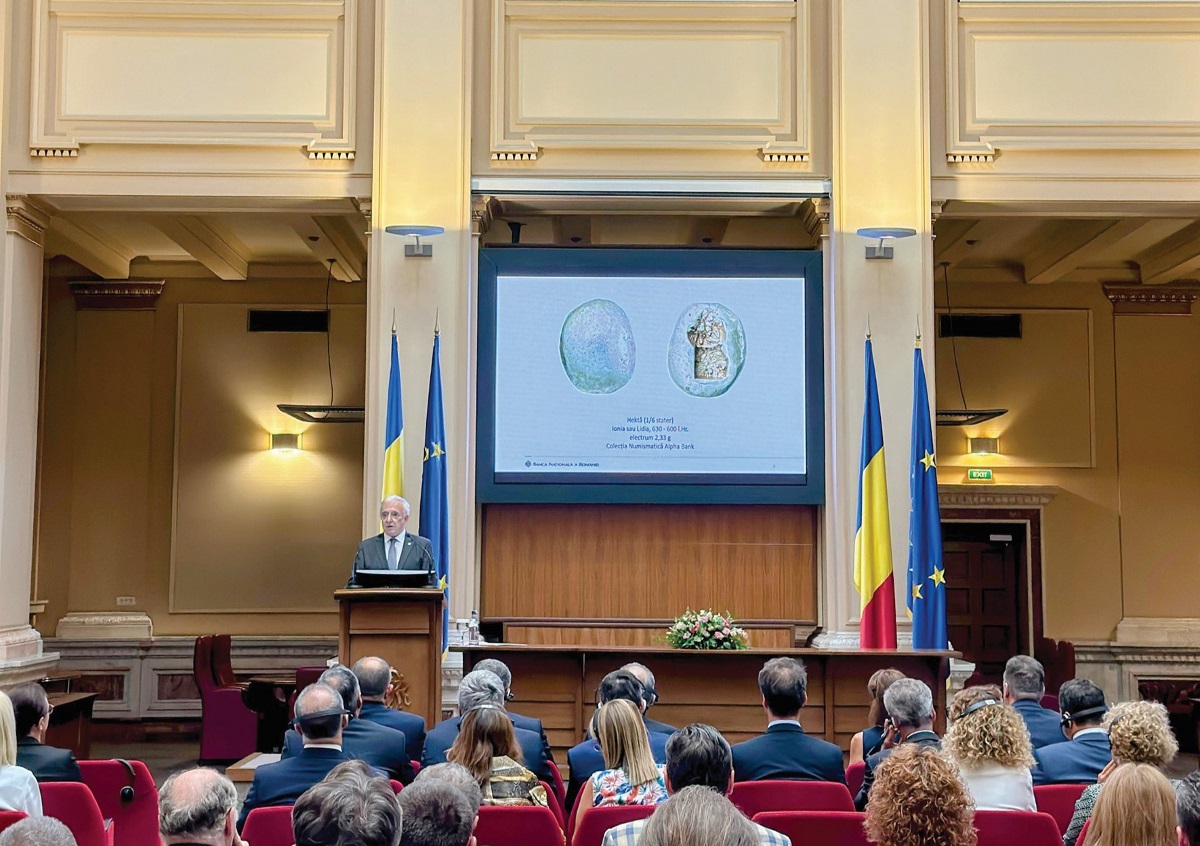
Saving and preserving the Sibiu – Agnita Railway for future generations – an example of how the British model of volunteer-led social enterprise is helping to keep the “Mocăniţa” alive
Investories BRCC
Bucharest – 1 July 2022. Over a winter weekend in the late 1990s an expat friend and I went to explore Transylvania by train from Bucharest, in which I made my first visit to Sibiu. Unlike the many visitors who now come to that lovely city by air, motorway and other main roads or mainline railway services, my friend and I had taken a taxi from Sighișoara to catch the narrow-gauge train from Agnita along the Hârtibaciu valley into Sibiu. Narrow-gauge trains once ran all the way from Sighișoara via Agnita to Sibiu, but by that time the part of the line over the hills between the Mures and Hârtibaciu valleys had been closed and dismantled for some 30 years.
Overcoming our alarm on noticing that the taxi was driving straight through and out of Agnita town, we were eventually reassured to find that the station had been relocated some way outside the built-up area on the road to Sibiu. It was a pleasant country spot and we were able to relax on the platform benches in the winter sunshine whilst we waited for the solitary train of the day to arrive.
Eventually the train of the day arrived from Sibiu, collected us and some other passengers (all of whom appeared to be local) and set off back down the valley. Freight traffic on the line had ceased and wagons stood unused in the sidings at stations along the line. It was interesting to watch how some of the other passengers got off the train where it slowed down between stations, as well as the kind of local produce which appeared to make up much of their luggage. The spectacle of this, together with the red-topped hats of staff at the stations through which we passed and the views of the Carpathians to the south made it an enjoyable journey. Eventually we arrived in Sibiu and were decanted from the train next to where the new shopping mall now stands. We and all of the other passengers and traincrew then set off to walk under the flyover to Sibiu station and, in our case, on to dinner in the old town before taking the night train back to Bucharest.
It was fascinating and bucolic. We could have got to Sibiu much faster by taking a maxitaxi from the centre of Agnita, but it was one of those experiences that make being an expat in Romania so rewarding. Obviously, this railway could not have lasted as a commercial operation and I was sad, but not surprised, to hear that it had been closed a few years later.
That would have been the end of this railway and the rails between Agnita and Sibiu could have been expected to have been sent for scrap, just as the rails on the section of the line from Agnita on to Sighișoara were when that part of the line closed in the 1960s. However, by the early 2000s British interest in the culture and heritage of this part of Romania was well-established and most importantly, the established success of volunteer-led heritage railways in the UK was known and could provide a model for the future of the “Mocăniţa”.
British expertise and experience were however not enough – the key ingredient for the success of the project was a pool of enthusiastic Romanian volunteers who wished to see the preservation of the Mocăniţa as a part of the industrial history and cultural heritage of the area. Connections were made in the Sibiu and things began to move with the formation of a preservation society, “Asociația Prietenii Mocăniței” and a British supporting group, “Sibiu Agnita Railway – UK”, better known as SARUK. The membership of SARUK includes a number of very well-known personalities in the UK heritage railway sector and it has often been observed that the efforts and challenges of preserving the Mocăniţa echo those of the pioneers of the heritage railway sector of the UK in the 1950s and 1960s.
The Romanian supporters however achieved the first and most important step of preventing the railway track being sent for scrap, by getting the railway officially listed as a historic monument. In theory, therefore, the railway has the same legal protection as other historic monuments such as Cotroceni Palace in Bucharest. It is also the property of the Romanian State, having been nationalised in 1949. Unfortunately, this status does not bring the level of protection which might at first sight be supposed. The legal framework for publicly-owned railways and other public assets envisages them being given in concession for commercial exploitation by the highest bidder. As may be grasped from my description of the line during its last years of commercial operation, such an expectation is wildly unrealistic. The line was instead caught up in the restructuring of Romania’s State-owned railways, with the lines, stations, trains and depots being allocated to different commercial entities for exploitation. Whilst this may make economic sense in commercial railway operations for transport purposes, it makes absolutely no sort of sense for the preservation of the Mocăniţa as a historic monument. It leaves commercial entities with responsibility for the costs involved with the proper preservation of assets which no longer have a transport function, at a time when the State Budget is under pressure to improve Romania’s network of motorways and mainline railways. At the same time, the public authorities responsible for protecting Romania’s historic monuments have limited time and budgets. The result has been sadly predictable: the railway has been left without proper maintenance; in some places rails and other equipment have disappeared, apparently stolen; the locomotives have been removed and most of the carriages and wagons have been scrapped; buildings have been allowed to fall derelict or are occupied by persons who replace original roof tiles and wood-framed doors and windows with modern materials. All in all, not the manner in which a State-owned historic monument would be expected to be preserved – and certainly not in the worst cases, in a manner which can be expected to attract a public interested in visiting Romania’s historic monuments.
In the face of these difficulties, the volunteers have however been making progress. Locomotives, carriages and wagons have been borrowed, hired or bought by the association from sources within and outside Romania and the track has progressively been restored allowing passenger services for visitors to be resumed over 7 km of track between Cornățel and Hosman at weekends and some weekday evenings, using a diesel locomotive. The work to restore these parts of the line to use has been carried out by volunteer members of Asociația Prietenii Mocăniței each weekend and on some weekday evenings, helped from time to time and coached by volunteers from SARUK. At least once a year, a steam locomotive is hired to haul the trains and this year a steam gala is to be held on 10 and 11 September 2022, at the end of a planned week’s working visit by volunteers from SARUK. I have already seen at first-hand how these train services are attracting new visitors to the Hârtibaciu valley – an excellent example of sustainable tourism. The volunteers have also now been able to get access to part of the station buildings at Cornățel and Hosman, as well as to the locomotive shed in Sibiu. All will need considerable work to be done to restore them, but this is a very positive development for efforts to secure their future.
The sterling efforts of the volunteers who work on the line at weekends and in evenings is not enough, however. As this is a project centred on the preservation of buildings and structures which are in the ownership of the State or of State-owned entities a measure of co-operation from the public authorities is also needed. In this civil society project by volunteers who are almost entirely unconnected with the railway industry in Romania, the Romanian preservationists of the 2010s and 2020s can find themselves faced with the same scepticism which their British predecessors faced sixty years ago. Sometimes public demonstrations of confidence in the project are more effective than detailed explanations of the benefits which is will bring. In this regard the volunteers have been delighted to have received a public letter of support from HRH the Prince of Wales, as well as being able to welcome HRH aboard one of the trains at Cornățel station during his most recent visit to Romania.
As a commercial transport business, this railway line failed in the early 2000s. As a volunteer-led social enterprise preserving the historic fabric of the Hârtibaciu valley, the same railway line is succeeding in the 2020s. It can continue to bring a measure of prosperity into the area through which it passes, as the experience of similar projects in the UK amply demonstrate. Come and see for yourselves! (Mocănița Văii Hârtibaciului – sibiuagnitarailway.com)
Neil McGregor, Vice-Chair for Corporate Governance & relations with the British Chambers of Commerce, immediate Past Chair, BRCC
Share
Share















